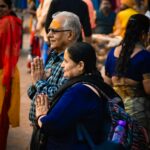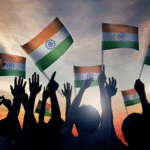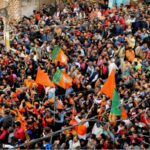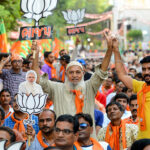Balancing Citizen Empowerment and Accountability in the World’s Largest Democracy
Key Metrics:
- Universal Adult Suffrage: India has over 940 million registered voters, demonstrating its commitment to inclusive electoral participation.
- Fundamental Rights: Enshrined in Articles 12-35 of the Constitution, these include the right to equality, freedom, and cultural expression, ensuring citizen empowerment.
- Civic Literacy: Recent reports indicate that over 80% of urban Indians are aware of their voting rights, while rural areas lag behind at 60%.
- Public Participation: Platforms like MyGov and grievance redressal portals receive millions of inputs annually, showing increasing civic engagement.
News Body
India’s democratic framework, built on the pillars of rights and responsibilities, has enabled its citizens to play an active role in shaping the nation’s progress. As the largest democracy in the world, India continues to navigate the intersection of individual freedoms and civic duties, fostering a culture where citizens are not just beneficiaries but active contributors to governance and development.
The Foundation: Rights Enshrined in the Constitution
The Indian Constitution guarantees a range of fundamental rights, from equality before the law to freedom of speech and cultural expression. These rights empower citizens to participate in governance, demand accountability, and protect their identities in a pluralistic society.
For instance, the Right to Education (RTE) has ensured that millions of children from marginalized backgrounds gain access to quality schooling. Similarly, the Right to Information Act (RTI) has transformed transparency in governance, allowing citizens to question policies and demand clarity from public authorities.
Civic Responsibilities: The Backbone of Democracy
While rights form the cornerstone of India’s democracy, responsibilities are equally crucial for its sustenance. Citizens are expected to respect the Constitution, uphold national unity, and pay taxes, among other duties. However, civic awareness often lags, leading to challenges such as low compliance with environmental regulations and limited participation in local governance.
Efforts like the Swachh Bharat Abhiyan have highlighted how citizen-driven initiatives can complement government policies. The campaign’s success in improving sanitation across urban and rural areas underscores the transformative potential of collective action.
Digital Platforms: Bridging the Gap
India’s digital revolution has played a key role in amplifying civic engagement. Platforms like MyGov, grievance redressal portals, and mobile applications for public feedback enable citizens to contribute to policymaking and monitor governance.
Social media platforms like Twitter and Facebook have also become tools for civic expression, allowing citizens to voice concerns, organize movements, and hold authorities accountable. Initiatives such as #SaveTheInternet and campaigns for gender equality demonstrate how digital tools are reshaping India’s democratic engagement.
Youth Participation: Rights and Duties in Action
India’s youth, representing 65% of the population, are a crucial demographic in driving democratic participation. From voting in record numbers during elections to organizing social movements, young Indians embody the intersection of rights and responsibilities.
Programs like Youth Parliaments and leadership development initiatives have encouraged greater political participation among young citizens. However, barriers such as lack of mentorship and limited access to resources remain challenges to full engagement.
Challenges: Striking the Balance
India’s path to progress is not without hurdles. Low levels of civic literacy in rural areas, widespread misinformation, and political apathy among certain demographics hinder the realization of a fully participatory democracy. Bridging the gap between urban and rural engagement, fostering accountability, and combating fake news are critical for sustaining progress.
Furthermore, balancing individual freedoms with collective responsibilities, especially in areas like environmental conservation and social harmony, remains a pressing challenge.
Conclusion
India’s journey as a democracy highlights the dynamic interplay between rights and responsibilities. By empowering citizens with constitutional freedoms while emphasizing their duties, the nation has created a framework that promotes both individual growth and collective progress.
As India continues to evolve, fostering civic literacy, encouraging grassroots participation, and leveraging digital tools will be key to strengthening its democratic fabric. The intersection of rights and responsibilities is not just a concept but a roadmap for India’s path to progress—one that ensures every citizen contributes to the nation’s enduring legacy of democracy and development.












